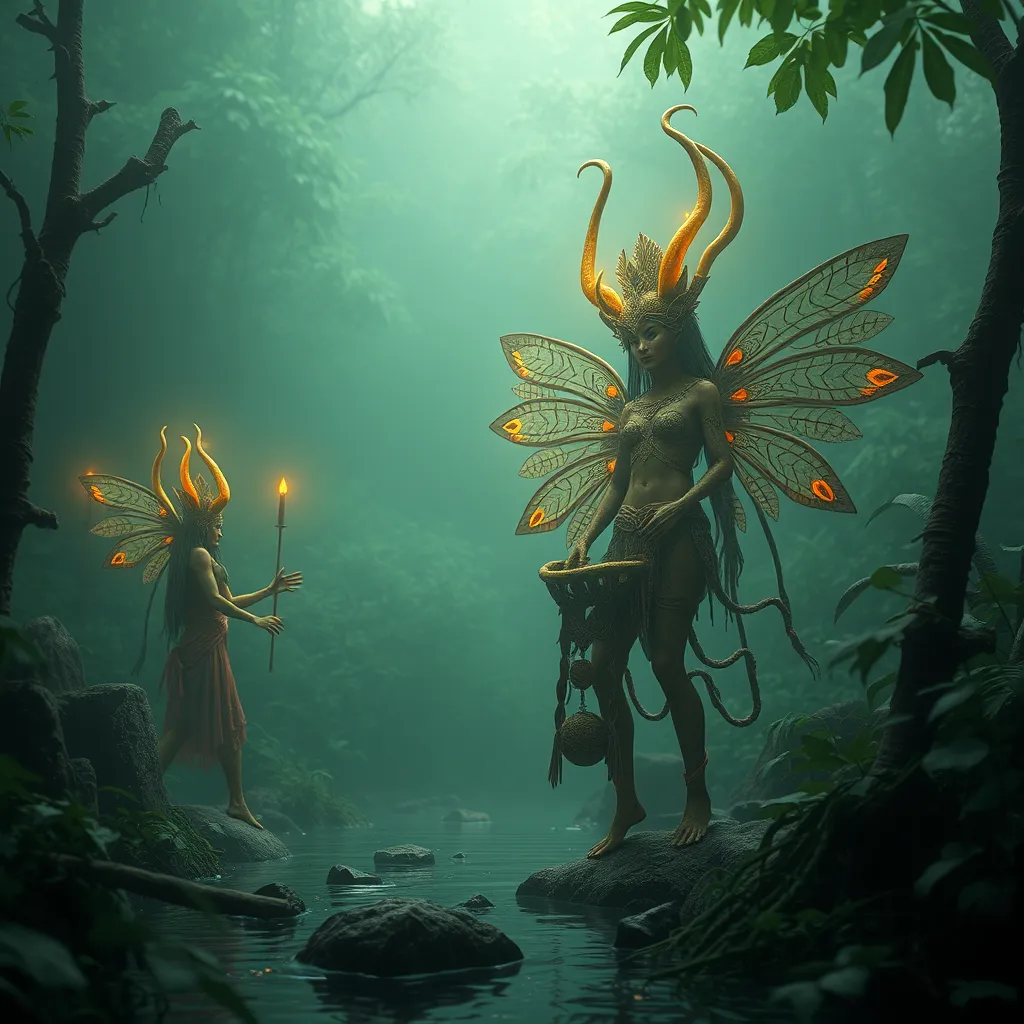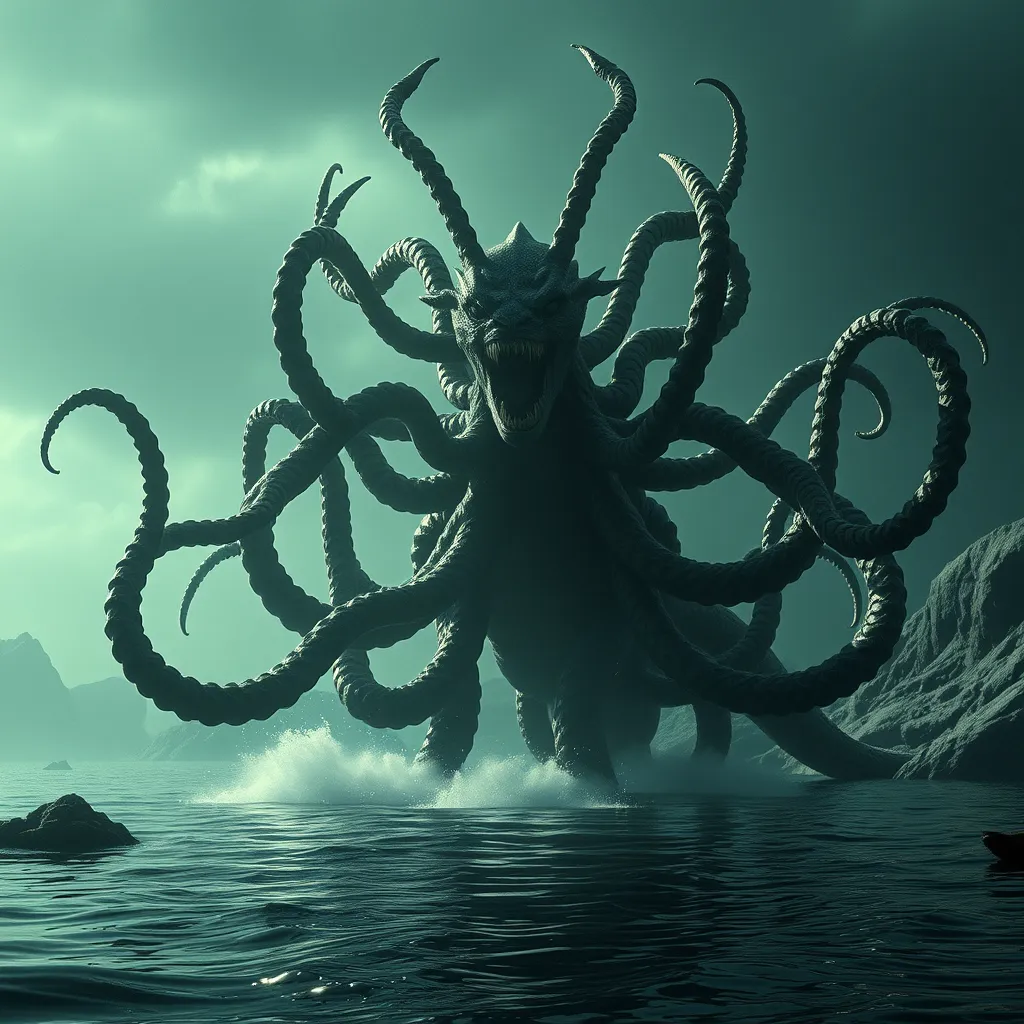The Nymphs of the Amazon: Exploring the Lore of the Yara and the Boitatá
I. Introduction
The rich tapestry of Amazonian folklore is woven with vibrant tales and mythical beings, where nature is revered and its elements personified. Among these captivating legends, two figures stand out: Yara, the water nymph, and Boitatá, the guardian serpent. These entities not only embody the natural wonders of the Amazon but also reflect the values, fears, and dreams of the cultures that inhabit this vast region.
Yara and Boitatá hold significant places in the cultural landscape of the Amazon, serving as symbols of femininity and protection, respectively. They epitomize the duality of nature—water and fire, beauty and danger, seduction and guardianship. This article aims to delve into the lore surrounding these two fascinating figures, exploring their origins, tales, and the cultural significance they continue to hold today.
II. The Yara: The Water Nymph
Yara is often depicted as a breathtakingly beautiful woman, with long flowing hair that resembles the rippling waters of the Amazon River. Her enchanting presence is said to mesmerize anyone who ventures too close to her domain. Traditionally, she is described with:
- Skin that glimmers like water under the sunlight.
- Eyes that reflect the depths of the river.
- A graceful, alluring figure that captivates the hearts of young men.
In Amazonian mythology, Yara plays a pivotal role as a water nymph. She is believed to inhabit rivers and lakes, often luring fishermen and travelers to their doom with her ethereal beauty and enchanting songs. Yara embodies the symbolism of water, representing femininity, fertility, and the life-giving qualities of nature.
III. The Legend of Yara
The legend of Yara varies across different cultures within the Amazon basin, but common themes persist. One prominent origin story describes her as a beautiful young woman who was transformed into a nymph after being wronged by those she loved. Some tales suggest that she was the daughter of a powerful chief, while others depict her as a simple villager. Regardless of her origin, she is often portrayed as a tragic figure, embodying the pain of betrayal.
Yara’s tales frequently revolve around her seductive nature and the consequences that befall those who fall under her spell. Young men who are enchanted by her beauty often meet tragic ends, either drowning in the river or becoming lost in the wilderness, forever haunted by her call. Yara’s connection to the Amazon River serves as a reminder of the duality of nature—its beauty and its peril.
IV. The Boitatá: The Guardian Serpent
In stark contrast to Yara, Boitatá is depicted as a massive serpent, often described with fiery eyes and a body that glows like embers. This creature is seen as a guardian of the forest and water, protecting the natural world from those who seek to harm it. Boitatá is characterized by:
- A serpentine body that can traverse both land and water.
- Fires that emanate from its eyes, illuminating the darkness of the Amazon.
- A fierce protector of nature, punishing those who disrespect the environment.
Boitatá plays a crucial role in Amazonian folklore as a symbol of fire and protection. It is believed to guard the forests and rivers, ensuring that balance is maintained within the ecosystem. The creature is often invoked in tales to instill respect for nature and its inherent dangers.
The Legend of Boitatá
Like Yara, the legend of Boitatá varies, with numerous interpretations existing within different communities. One popular story describes how Boitatá was born from the fires of the earth, created to protect the forests from destruction. Local tribes tell tales of how the serpent would chase away those who harmed the environment, ensuring that harmony is maintained.
The fiery serpent is also associated with the phenomenon of fireflies, which are believed to be the spirits of the forest, dancing in the night sky as a result of Boitatá’s presence. Communities often recount stories of encounters with Boitatá, emphasizing its protective nature and the consequences of disrespecting the land.
VI. Cultural Significance of Yara and Boitatá
Yara and Boitatá have transcended mere folklore, becoming integral to the cultural identity of Amazonian communities. Their representations can be found in various forms of art and literature:
- Art: Many local artisans create sculptures and paintings that depict Yara and Boitatá, celebrating their beauty and significance.
- Literature: Modern authors have drawn inspiration from these legends, weaving them into contemporary stories that resonate with themes of nature, love, and loss.
- Rituals: Traditional ceremonies often honor Yara and Boitatá, invoking their spirits for protection and blessings.
In recent years, there has been a resurgence of interest in these figures, leading to modern interpretations and adaptations in popular culture, including movies, books, and music, ensuring that their legacy endures.
VII. Comparative Analysis of Yara and Boitatá
When comparing Yara and Boitatá, several parallels and contrasts in their symbolism and roles emerge. Both figures represent different aspects of nature:
- Yara: Embodies water, femininity, and the seductive beauty of nature.
- Boitatá: Represents fire, strength, and the protective qualities of the natural world.
The interplay between water and fire in Amazonian lore highlights the balance between nurturing and destructive forces. Together, they reflect the values and beliefs of Amazonian cultures, emphasizing the importance of respecting nature and acknowledging its duality.
VIII. Conclusion
In conclusion, the legends of Yara and Boitatá offer a glimpse into the rich folklore of the Amazon, showcasing the intricate relationship between humanity and nature. Through their stories, we understand the cultural significance of these figures, who embody the beauty and danger of the natural world.
The enduring legacy of Yara and Boitatá continues to inspire and captivate, encouraging modern audiences to explore the depths of Amazonian mythology. As we delve into these tales, we are reminded of the importance of preserving the cultural narratives that connect us to our environment and each other. The exploration of these mythical figures serves not only as a reflection of the past but also as a guide for future generations to respect and cherish the wonders of the Amazon.



